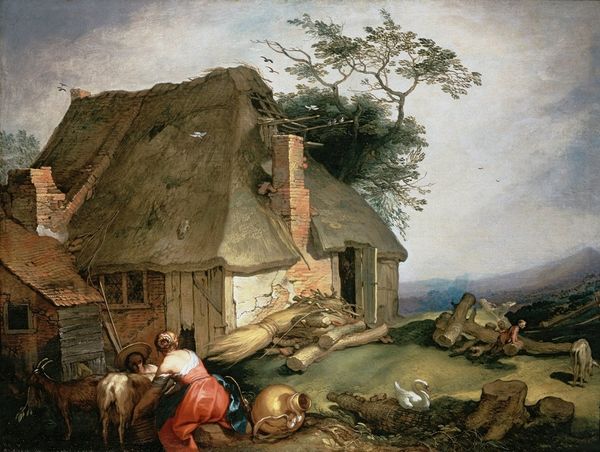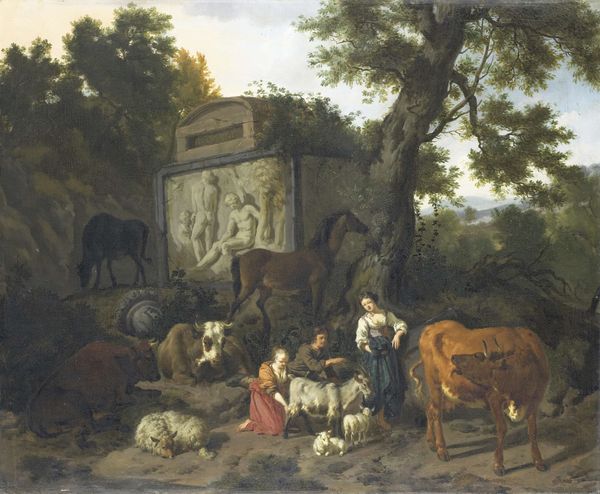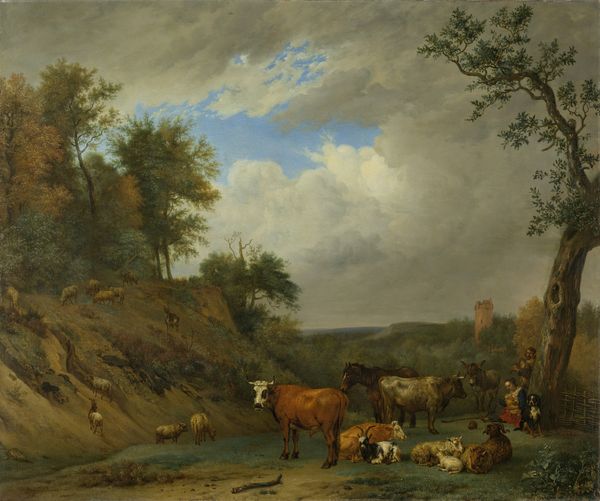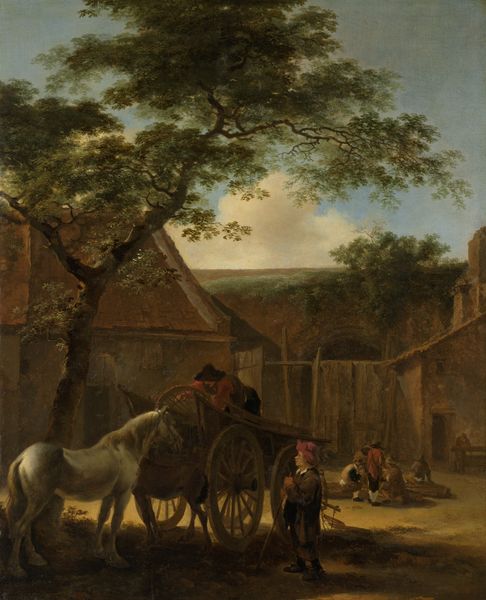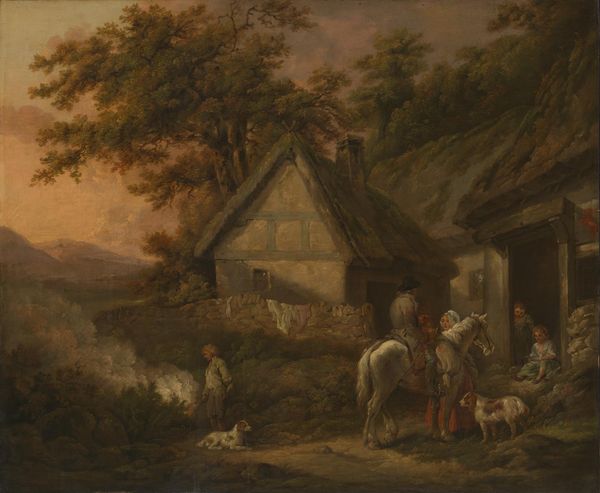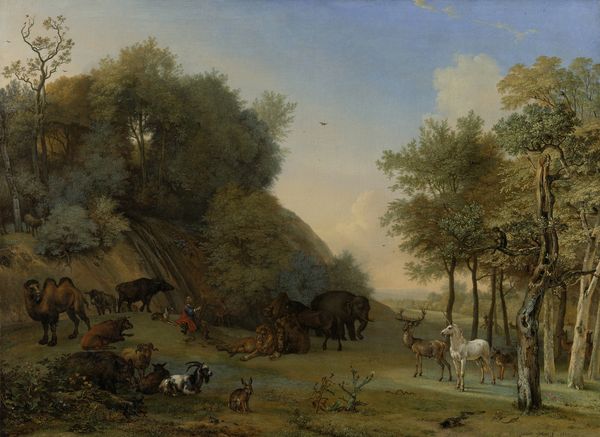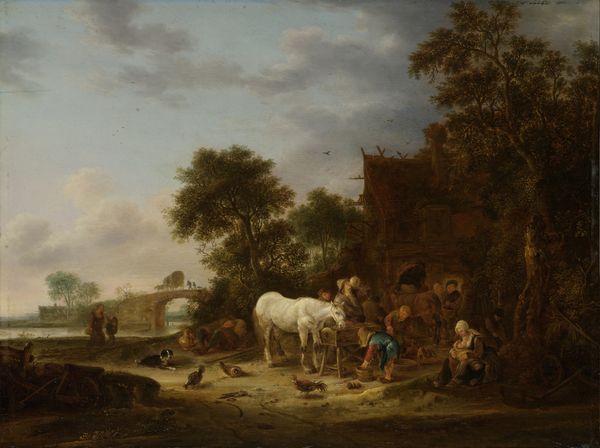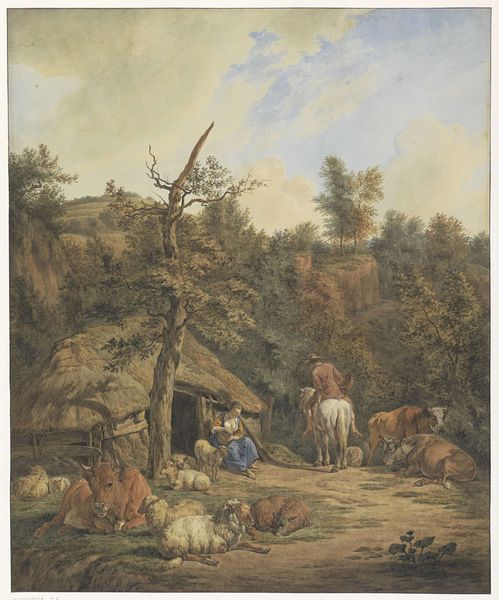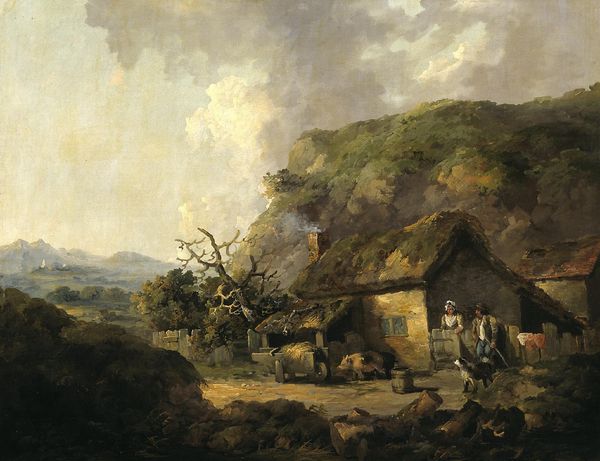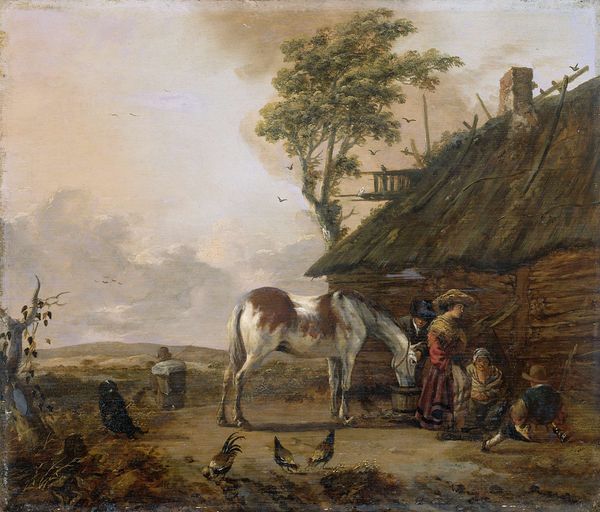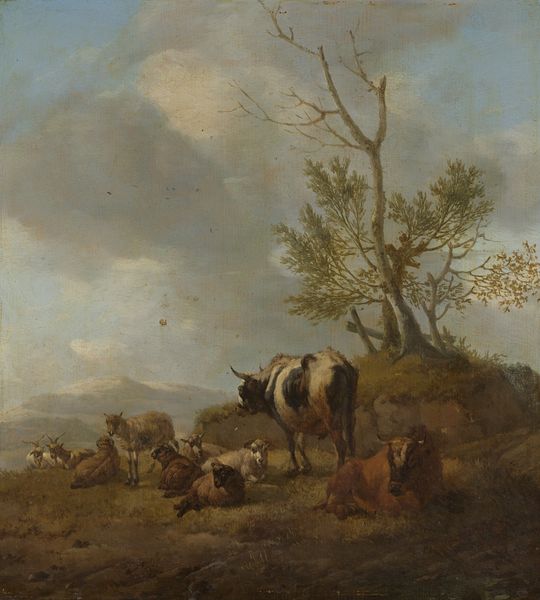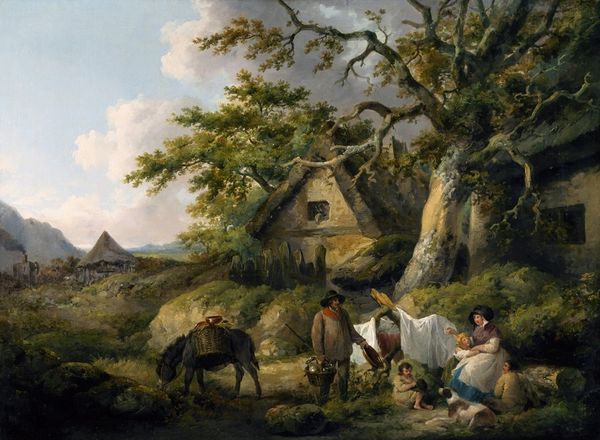
painting, oil-paint
#
baroque
#
dutch-golden-age
#
painting
#
oil-paint
#
landscape
#
figuration
#
oil painting
#
genre-painting
#
realism
Dimensions: height 76 cm, width 65 cm
Copyright: Rijks Museum: Open Domain
Curator: This is "The Hut," an oil painting created around 1671 by Adriaen van de Velde, now residing here at the Rijksmuseum. Editor: It exudes such a peaceful feeling, doesn’t it? The gentle way the light touches the animals, the way everything seems nestled together… it's quite idyllic. The color palette seems fairly muted as well, contributing to that pastoral quality. Curator: Indeed. Van de Velde was a master of depicting everyday rural life, often embedding it with understated social commentary. During the Dutch Golden Age, such scenes became incredibly popular, idealizing a connection with nature during a time of growing urbanization. The detail in the depiction of livestock is quite striking. It's thought that Van de Velde completed animal studies for use within this sort of idyllic scene. Editor: Speaking of detail, I’m struck by how van de Velde used impasto techniques, especially on the sheep and the thatched roof, which helps render them palpable. There's an almost tangible texture at play. Consider also the figure under the hut. The subject seems to be embracing what I would expect to be a very "motherly pose," or perhaps nursing. This central staging of the composition would therefore give greater relevance to themes of community and family in the 17th Century. Curator: And it’s likely these seemingly “simple” genre scenes were commissioned by wealthier citizens, perhaps yearning for that simplicity themselves. There is an implied social structure at play: The mounted rider suggests a distinction from the resting figure who is taking care of either the sheep or her young child. Consider how Van de Velde integrates precise architectural elements – such as the detailing of the humble hut – within the organic, natural setting. This placement highlights the tension between human construction and the enveloping wilderness. Editor: That’s a crucial observation. There is indeed a tension here between the curated and the untouched. Although ostensibly "realistic," these works construct an idea of the bucolic idyll as itself, as you say, curated and constructed. Curator: Studying this piece gives a nuanced peek into the artifice and constructed realities within landscape paintings of the era. It certainly gives pause to appreciate just how much social dialogue the composition speaks to. Editor: I agree wholeheartedly. Spending even just a few minutes absorbing the composition unveils more layers than I anticipated initially. What appears straightforward is brimming with subtly coded cultural information.
Comments
rijksmuseum about 2 years ago
⋮
The Rijksmuseum bought this painting in 1822 for the – at the time – staggering amount of 8290 guilders. Its small format notwithstanding, throughout the 19th century the painting was considered an absolute masterpiece of Dutch Golden Age art. This celebrity status faded in the 20th century. Even so, it remains one of the most beautiful pictures from the last year of Adriaen van de Velde’s life.
Join the conversation
Join millions of artists and users on Artera today and experience the ultimate creative platform.
